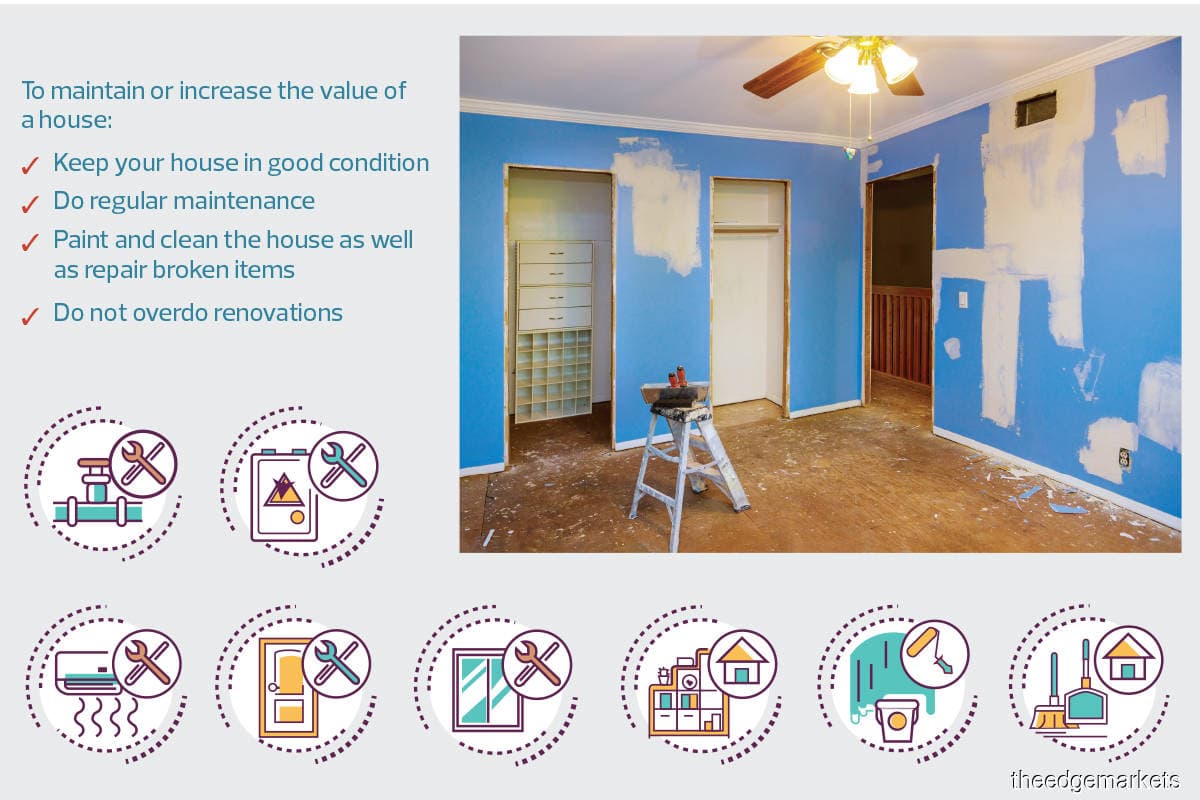
This article first appeared in City & Country, The Edge Malaysia Weekly on November 30, 2020 - December 6, 2020
Since the exemption of the Real Property Gains Tax (RPGT) was announced, Elena has been looking at selling a landed property she bought for investment in 2005.
“I have been thinking of disposing of this house for some time but never really took action. Now, with the RPGT exemption, I am seriously looking at selling it. My only concern is that I cannot sell it at the price I want due to the neighbourhood,” she says.
Security in the neighbourhood is not very good, she says, as it is an old area that is not gated and guarded. A couple of break-ins were reported this year.
“But I keep my unit clean and in good condition. Anything that is broken or not working, I fix immediately. I hope this will help increase its value,” she adds.
Before selling a house, homeowners should know how property valuation works and what contributes to the value of the house.
According to Raine & Horne International Zaki + Partners Sdn Bhd associate director James Tan, to assess the value of a house, a property valuer will measure it and take note of the number and type of rooms as well as the fixtures and fittings.
Unique attributes that will be taken into account include the location, a building’s structure and condition, faults, standard of presentation and fit-out, good vehicle access, planning restrictions and local council zoning.
“The valuer combines these attributes, together with recent comparable sales in the surrounding area and prevailing market conditions, to produce a valuation report,” says Tan.
Macro and minor factors
Macro factors such as the neighbourhood and proximity to noise and dust are some of the aspects that will decrease the value of a house, says Tan.
“An example would be the houses that face the Damansara-Puchong Expressway. Although there is a wall in front, those houses have a lower value compared with those that are located away from the expressway,” he explains.
Other negative factors include properties that face or are located close to transmission lines, slopes, places of worship, oxidation ponds or sewage treatment plants, or are in crime-infested areas.
Then, there are the micro factors, which homeowners can control. “These are specifically in relation to the condition of the house. Poorly maintained, dirty, untidy, leaking roofs or pipes, plumbing issues and termite infestation are a few factors that will decrease a property’s value,” says Tan.
LaurelCap Sdn Bhd executive director Stanley Toh also cites poor maintenance as a factor that can affect a house’s value, apart from poor design.
The tenure of a leasehold property will lower its value as well. “When a house reaches an unexpired term of less than 50 years, the value of the property tends to falter,” he says.
Always keep it in good condition
To maintain or increase the value of their house, property experts advise homeowners to always keep it in good condition. “Regular maintenance, painting, cleaning and repairing of broken items need to be done,” says Tan.
Permanent renovations such as built-in fixtures and fittings, upgrading the flooring and ceiling, landscaping and three-phase wiring, he adds, will help add value to a property.
A house with three-phase wiring means that electricity is delivered using three power lines instead of one, reducing the risk of a blackout.
Although some renovation is good, Toh cautions against overdoing it. “Generally, a buyer will not pay for renovation work that reflects the original owner’s personal taste. Hence, the owners will not be able to recoup their renovation cost.”
He recalls valuing an extensively renovated corner terraced house many years ago. The renovations reflected elements of a certain religion and had many statues.
In the end, the new buyer only paid 10% more than for a standard corner lot in the area. “Not many people would accept the design of the house and pay the amount spent on the renovation. The original owners could only recoup about 10% of the renovation cost,” says Toh.
Tan, meanwhile, remembers a bungalow he valued recently because it was maintained in such a good condition. “It had an incredible view and there was not a speck of dust on the floor. It looked like a new house even though it was a few years old.”
He says the windows were very clean, the whole house was well ventilated and the wooden panelling with stained glass was immaculate.
So, always keep your house clean and tidy and never neglect regular maintenance work, the experts stress.
Save by subscribing to us for your print and/or digital copy.
P/S: The Edge is also available on Apple's AppStore and Androids' Google Play.

